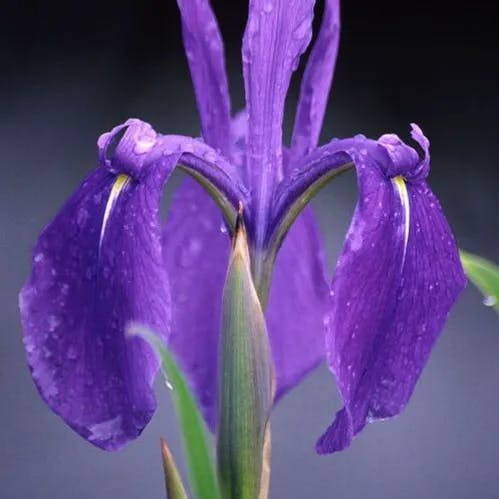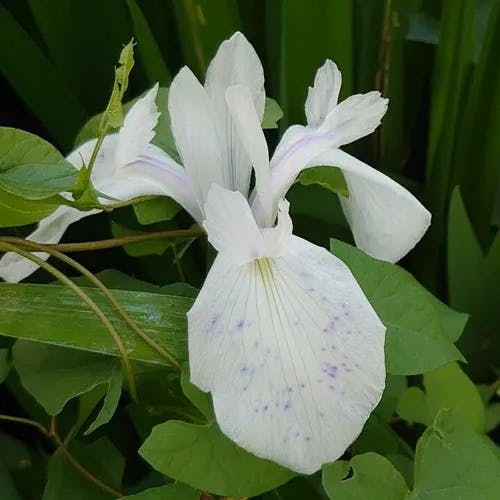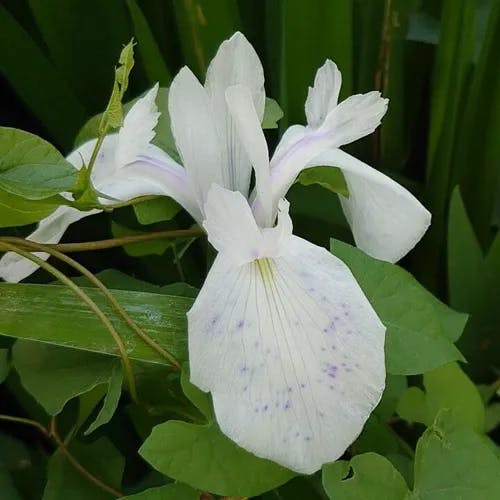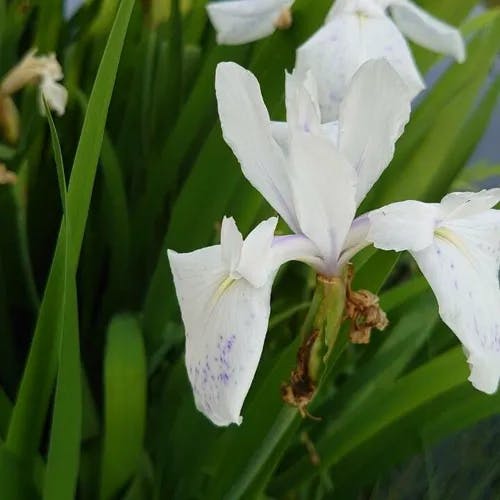Iris laevigata, commonly known as the Japanese iris or rabbit-ear iris, is a species of flowering plant in the family Iridaceae. It is native to East Asia, particularly Japan, China, and Korea, and has been cultivated for centuries for its ornamental value. The plant is a perennial herb that grows up to 80 cm in height. It has a creeping rhizome that allows it to spread and form dense clumps. The leaves are sword-shaped, bright green, and can reach up to 90 cm in length. The flowers of Iris laevigata are large and showy, typically blooming in late spring to early summer. They are usually blue or violet, but white and pink varieties also exist. Each flower has six petals, with the three outer ones spreading or drooping and the three inner ones standing upright. In Japanese culture, the Iris laevigata is associated with the Boys' Day festival and is believed to ward off evil spirits. It is also a symbol of purity and innocence. The plant has been bred into many cultivars, each with its unique flower color and form. The fruit of Iris laevigata is a capsule that contains numerous brown seeds. The plant prefers wet, acidic soils and full sun to partial shade. It is relatively easy to grow and is resistant to most pests and diseases. In terms of size, the plant can reach up to 80 cm in height and spread up to 60 cm. It is often used in water gardens, pond margins, and bog gardens due to its preference for moist conditions. Despite its exotic appearance, Iris laevigata is quite hardy and can tolerate cold winters.
0
0











